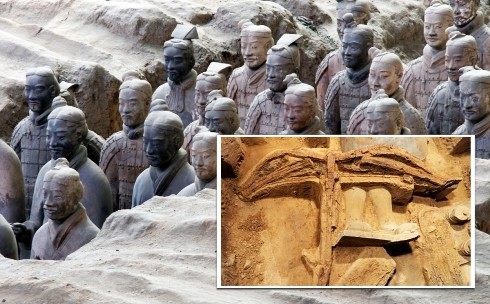Scientists can now create a replica of the ancient crossbow and study the Chinese weapon, as archaeologists have unearthed the most complete ancient crossbow together with the terracotta army that was dug up in Xi'an, Shaanxi Province.
The crossbow, said to be the most preserved among the other crossbows found in the past, has a 145-centimeter arch and a 130-centimeter string.
Shen Maosheng, head of the archaeological team, told the media that the bow string's smooth surface may have been made of animal tendon, not fabric, while its trigger mechanism is made of bronze.
Shen said that the new discovery would reveal how Qing, the two wooden sticks often discovered with the ancient weapon, was used as a tool to transport and preserve the crossbows during the Qin dynasty.
Qing is often mentioned in documents, but its function was not clearly explained, he added.
"When we dusted off the sticks, we found three holes equidistant from each other and concluded that they were probably used to hang up ropes that fastened the crossbows when they were not in use," Shen was quoted as saying.
Shen said that the Qing was used as an effective way to keep the arch and string in shape and thus maintain their power in the long run. It was also used to fix the crossbows during transportation, he added.
Yuan Zhongyi, former curator of Museum of Qin Terra-cotta Warriors, told Huashang Daily that the ancient Chinese crossbow has a shooting range that could reach almost 800 meters and can be as effective as an AK47.
Yuan said that the discovery of the complete set of crossbows will allow scientists to study the weapon more accurately.



























